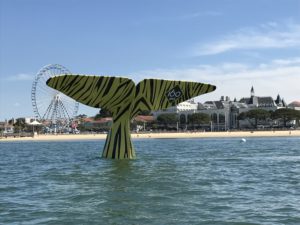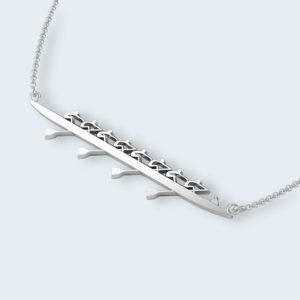A few days ago our Face Book group generated this Question. 19 year old Imogen is asking for more information about UT2 training. And there is no better coach than Marlene Royle to answer this. Here is what she says. In a very personal way.
Why low intensity training sessions are a must for your high performance months from now.
“You write in to us concerned about her UT2 erg training and what is the right approach for this low intensity workout. Curiously, I get more of these e-mails than those bemoaning workouts that can raise enough lactic acid in the blood stream to strip the varnish off your vintage Stampfli single. It is a more formidable task to get masters or juniors to relax and do their base aerobic work correctly than to get them to charge into racing oblivion. But without the slow rowing there will be no fast rowing later on. In fact, to do your low intensity work with too much speed is one of the biggest training mistakes made on the market because you deny yourself the true benefits that oxygen utilization contributes to your fitness.
Low intensity training sessions
So I am responding to your message of distress explaining why long, slow distance plays such an important part in getting ready for our events. The majority of your annual training time falls into this category during your preparation phases. In season these practices are sandwiched by oxygen transport and anaerobic work. It builds our capacity to recover from hard efforts; ultimately, how much we can safely do, without overtraining, is limited by our ability to recover. You might have 20 available exercise hours per week but if it takes you three days to recover from a difficult session your volume must then be reduced compared to taking one day to recover from the same session. When intervals are on the agenda, the amount of recovery time one requires must be factored into the weekly cycle. More significantly, if you are racing several times in one day or over multiple days, the athletes with the best ability to recovery between events will fare better in the final stages of a regatta.

Understand that it teaches your body to utilize fat as a fuel. It boosts blood capillary density in the working muscles for greater oxygen delivery because you are requesting a constant supply of oxygen for a long period of time. Fat increases the number of the energy-producing mitochondria in the cells. It allows one to maintain longer peak conditioning and creates the conditions to develop technique under concentrated conditions. What could be better? Old timers say, “If you can’t do it slow, you can’t do it at all” and “mileage makes champions.” Yes, if you are not careful, boredom can set in while you are putting in lengthy sessions, so for motivation keep your list of advantages taped to the refrigerator door because you will be getting hungry.
Aerobic training
The level of aerobic base training can be measured in a few ways depending on your access to lab testing or personal preferences. Ways to define your low intensity rowing or cross-training includes: a blood lactate measurement of 2 Mmol/liter and the athlete’s corresponding speed as determined by lab testing, a heart rate range of 65 to75 percent of maximum, stroke rates between 16 and 22 strokes per minute, boat/erg speed that is approximately 70 to 75 percent of race pace for 2,000 meters, a 500-meter average speed that is 13 to18 seconds slower than your 20-minute trial average 500-meter pace, or a comfortable speed that can be sustained for a one to two hours during which you are able to sing. You can manipulate your variables by distance, time, set stroke rate, or pattern of changing stroke rate. The volume you choose to do in one session depends on your current fitness level; for one athlete it may mean reaching the 60-minute mark, for another 180 minutes. Here are some variations for extended rows: 10 to 20 kilometers or up to 120 minutes at 18 strokes per minute stopping only to turn the boat around and hydrate; 10 to 15 kilometers with stroke rate changes every five minutes at 16, 18, and 20 or including one minute of a drill every five minutes; three sets of 20 or 30 minutes with three minutes rest between at a constant rating of 20 strokes per minute. All these kilometers

Activity cocktail
A blend of activities is good for the mind and for developing metabolic qualities in your non-rowing muscles. This is where cross training can fit nicely into a program. But save your upscale workouts, anaerobic threshold or faster, for on the erg or in the boat so they are sport-specific. On days when you want to get outside to do something with friends or just need a change of scenery, you can go for a bike ride, cross-country ski, run, hike, power walk, swim, or play a team sport. If you plan to do your longest session in the gym you can do what I call the aerobic medley. Check out what cardio machines you have available. It could include indoor rowers, treadmills, steppers, elliptical machines, spinning bikes, recumbent bikes, or climbers. If you were planning a total of 80 minutes of aerobic work you could do a steady piece on one apparatus but you have several choices to make the time go by fast and keep things interesting such as: alternating 20 minutes rowing with 20 minutes running on the treadmill; alternating 10 minutes each of rowing, running, elliptical, and spinning; alternating 10 minutes each of the stepper and spinning; or 20 minutes rowing then 40 minutes running then 20 minutes rowing; or include 10-minute segments of mixed calisthenics such as sit-ups, squats, push-ups, or jumpies in your routine. Variety and purpose makes it easier to comply with these valuable though time-consuming exercise bouts.”
Marlene Royle was among the first coaches in the United States dedicated to masters rowing. Marlene’s career began in 1982 coaching the Boston University Summer Recreational Rowing Program, a community sweep program on the Charles River. Then, Marlene was the Varsity Girl’s Coach at Middlesex School in Concord, Massachusetts in 1986 and 1987. In 1986, she joined the coaching staff at the Craftsbury Sculling Center in Vermont and worked in various levels of the program for 20 years, including associate director from 2004-2006. From 2005-2009, Currently she coaches at the Aviron Knowlton Rowing – The Rowing Club on Lac Brome, Florida Rowing Centre, and Craftsbury Outdoor Center. Marlene also offers camps – have a look in our Camp Calender – and lessons by arrangement and contributes to Rowperfect’s blog.








This Post Has One Comment
For UT2 workouts to be effective is there a minimum amount of KM’s/week you should be doing? For example if your total weekly workout is less than say 30km both on/off the water are you better doing higher intensity work?